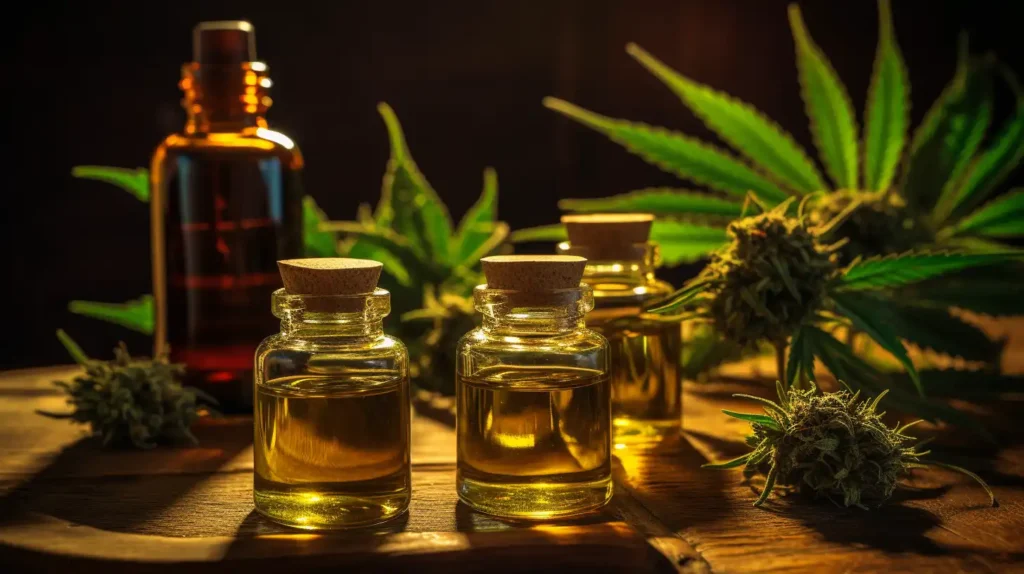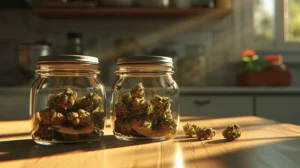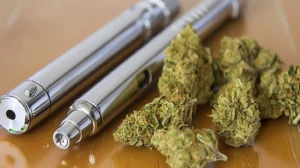Introduction Cannabis Dosage
The use of medical cannabis, a topic of both historical and contemporary interest, has emerged as a significant area of discussion in the medical community. This natural remedy, derived from the Cannabis sativa plant, encompasses a diverse range of compounds, most notably tetrahydrocannabinol (THC) and cannabidiol (CBD), each heralded for their unique therapeutic properties and applications. The resurgence of interest in the medicinal benefits of cannabis has been driven by a combination of anecdotal evidence and emerging scientific research, suggesting its potential efficacy in treating various conditions, ranging from chronic pain and anxiety to multiple sclerosis and nausea.
The complexity of medical cannabis lies not only in the diversity of its compounds but also in the intricacies of its dosing and administration. Unlike conventional pharmaceuticals, cannabis does not adhere to a ‘one-size-fits-all’ dosing model. Instead, it necessitates a nuanced approach, considering factors such as the individual’s weight, the specific condition being treated, the desired therapeutic effects, and the unique interplay between THC and CBD in various formulations.
The medical community is still navigating the challenges of standardizing dosages, with ongoing efforts to establish guidelines that can optimize therapeutic outcomes while minimizing risks. The aim of this comprehensive guide is to demystify the various aspects of dosing and administering medical cannabis. It endeavors to provide a detailed exploration of the general dosage recommendations, the various methods of administration (such as edibles, tinctures, oils, and smoking), and the factors influencing individual responses to cannabis treatment.
As the landscape of medical cannabis continues to evolve, it is essential for both patients and healthcare providers to stay informed about the latest developments in this field. This guide aims to serve as a valuable resource, offering insights and practical advice to navigate the complex world of medical cannabis dosing and administration.
Understanding THC and CBD
In the realm of medical cannabis, two primary compounds stand out: Tetrahydrocannabinol (THC) and Cannabidiol (CBD). These substances, while both derived from the Cannabis sativa plant, exhibit distinct properties and effects, making an understanding of their differences crucial for effective therapeutic use.
THC: The Psychoactive Component
- Psychoactive Effects: THC is best known for its psychoactive properties, which induce the “high” associated with cannabis use. This aspect can be both therapeutic and a cause for concern, depending on the patient’s condition and sensitivity.
- Therapeutic Uses: Despite its psychoactive nature, THC has been found to be effective in alleviating symptoms such as pain, muscle spasticity, glaucoma, insomnia, low appetite, nausea, and anxiety. Low doses, such as 2.5 mg per day or twice daily, can provide significant relief from anxiety.
- Dosage for Specific Conditions: For conditions like multiple sclerosis, a study showed that 4mg of THC administered once daily in the evening reduced pain and spasticity significantly. For severe chemotherapy-induced nausea and vomiting, a form of THC called Dronabinol is recommended at 5 mg every 1 to 3 hours, up to a maximum of 30mg of THC per day.
- Considerations: The lack of standardization in medical cannabis complicates the establishment of a universal dosage guideline for THC. However, 5mg of THC is gradually becoming an accepted standard unit.
CBD: The Non-Psychoactive Counterpart
- Non-Psychoactive Nature: CBD does not produce the psychoactive effects that THC does, making it a more appealing option for patients who want to avoid the “high” sensation.
- Therapeutic Applications: CBD is widely recognized for its potential in treating conditions like epilepsy, anxiety, inflammation, and pain without the intoxicating effects of THC. Its anti-inflammatory and neuroprotective properties are particularly notable.
- Dosage Guidelines: The dosage of CBD varies greatly depending on the formulation and the patient’s weight. For high CBD to THC formulas (approximately 20:1), patients over 110 pounds may start with 25 mg of CBD twice daily, increasing as needed up to a maximum of 600 mg daily.
- Adaptable for Various Conditions: CBD’s versatility makes it suitable for a range of conditions, and its lack of psychoactive effects allows for higher dosages without the risk of psychoactive side effects.
Understanding the distinct roles and effects of THC and CBD is fundamental to the effective administration of medical cannabis. The tailored use of these compounds, often in specific ratios, enables the maximization of therapeutic benefits while minimizing potential adverse effects. As the medical community continues to explore and understand these compounds, dosage guidelines and applications will become more refined and precise.
General Dosage Recommendations
When it comes to dosing medical cannabis, general guidelines are influenced by the specific ratios of THC and CBD in the products used. The following recommendations provide a starting point, but it is important to remember that individual needs can vary widely.
High CBD to THC Formulas (Approximately 20:1)
- Starting Dosage: For patients over 110 pounds, the starting recommendation is typically 25 mg of CBD twice daily.
- Incremental Increase: Dosage may be increased every one to two weeks by 25 mg as needed.
- Maximum Dosage: The maximum daily dosage suggested is around 600 mg of CBD【7†source】.
Hybrid THC and CBD Formulas (3:1)
- Initial Dosage: Patients over 110 pounds may begin with approximately 2.5 to 5 mg of THC once a day.
- Dosage Adjustment: The amount can be increased every week or two by 2.5 mg as required.
- Equal 1:1 Formulas: For these, patients can follow the THC guidelines mentioned above, starting with 2.5 mg of THC daily.
Smaller Doses for Lighter Individuals
- Weight Consideration: Individuals weighing less than 110 pounds are likely to require a smaller dosage of medical cannabis.
These guidelines serve as a foundational reference, but it’s crucial to adapt them to each patient’s unique situation, including their weight, medical condition, and response to cannabis treatment. Close monitoring and gradual adjustments are key to finding the most effective and safe dosage for each individual.
In the realm of medical cannabis, personalization is vital. A “start low and go slow” approach is often recommended, especially for those new to cannabis or trying a new administration method. This approach allows for careful monitoring of effects and adjustment of dosages as needed. Consulting with healthcare providers familiar with medical cannabis can provide additional guidance tailored to individual needs and conditions.
Administration Protocols
The administration of medical cannabis involves various protocols that can be tailored to individual patient needs and conditions. These protocols are generally categorized into routine, conservative, and rapid approaches, each designed to cater to specific patient characteristics and symptoms.
Routine Protocol
- Typical Approach: This is the most commonly recommended option, especially for patients experiencing various types of pain.
- Starting with CBD: The protocol often begins with CBD-dominant strains at 5 mg twice daily.
- Incremental Increase: The dosage is increased by 10 mg every few days, with a maximum dosage of 40 mg.
- Introduction of THC: If desired results are not achieved at the maximum CBD dosage, THC can be introduced at 2.5 mg daily, increasing by the same amount every few days until reaching a maximum of 40 mg.
Conservative Protocol
- Target Audience: Best suited for lighter-weight or more sensitive individuals, including frail and elderly patients, or those with severe comorbidities.
- Gradual Introduction: This method introduces CBD and THC at slower and smaller rates compared to the routine protocol.
- Dosage Guidelines: CBD is initiated at 5 mg once daily and titrated by 10 mg every 2-3 days up to 40 mg/day. If required, THC can be added at 1 mg/day and increased by 1 mg every 7 days to a maximum of 40 mg/day of THC.
Rapid Protocol
- For Immediate Relief: Suitable for patients with severe symptoms or significant prior cannabis use.
- Balanced CBD-THC Dose: Starts with a CBD-THC balanced dose between 2.5 and 5 mg of each cannabinoid once or twice daily.
- Faster Titration: The dose can be increased by 2.5-5 mg of each cannabinoid every 2-3 days until the desired effect is achieved or to a maximum THC dose of 40 mg/day.
Factors Impacting Dosage Effects
- Strain Type and Delivery Method: The type of strain (Indica, Sativa, or hybrid) and the method of delivery (oral, inhalation, topical) play a significant role in how the body responds to cannabis.
- Metabolism and Individual Response: Each individual’s metabolism and unique response to cannabis also influence the effectiveness of the dosages【7†source】.
These administration protocols provide a structured approach to cannabis dosing, allowing for careful monitoring and adjustment based on the patient’s response. It’s important to consult with healthcare professionals experienced in medical cannabis to determine the most suitable protocol for each patient’s specific needs.
Methods of Administration
Medical cannabis can be administered through various methods, each with its own set of benefits and considerations. The choice of administration method can significantly impact the onset, duration, and intensity of effects.
Smoking
- Immediate Effects: Smoking cannabis provides almost immediate effects, aiding in quick relief and dosage control.
- Strain Variability: Offers a range of strains with different outcomes.
- Respiratory Considerations: There are concerns about the respiratory effects of smoking, but high-potency cannabis requires less smoking to be effective.
Cannabis Oil and Tinctures
- Versatility: Can be administered alone, with food, or in drinks. Capsules are also an option.
- Rapid Absorption: Tinctures can be taken sublingually (under the tongue) for fast absorption.
- Dosing Control: Allows precise dosing, especially beneficial for microdosing with THC or CBD.
Edibles
- Discreet and Enjoyable: Comes in various forms like cookies, brownies, and gummies.
- Delayed Onset: Effects take longer to manifest compared to inhalation methods.
- Potency Considerations: Often produce stronger and longer-lasting effects than inhaled cannabis.
Topicals
- Targeted Relief: Ideal for localized pain and inflammation.
- Non-Psychoactive: Does not produce psychoactive effects, making it suitable for patients who wish to avoid the “high.”
- Usage Variability: Can be applied directly to the affected area for pain and skin issues.
Vaping
- Healthier Alternative to Smoking: Produces vapor instead of smoke, which is considered less harmful to the lungs.
- Quick Onset of Effects: Similar to smoking, vaping provides rapid effects.
- Control Over Dosage: Allows for controlled and consistent dosing, especially with pre-measured cartridges.
Choosing the right method of administration depends on the patient’s specific needs, preferences, and the medical condition being treated. It’s crucial to have a thorough discussion with a healthcare professional experienced in medical cannabis to determine the most appropriate method for each individual case.
Dosing Specific Products
The dosing of specific medical cannabis products requires careful consideration to achieve the desired therapeutic effect while minimizing potential side effects. Here’s a guide to dosing various forms of cannabis products:
Tinctures
- Precision Dosing: Tinctures allow for precise dosage control using a dropper, making it easier to adjust according to individual needs.
- Sublingual Absorption: Placing drops under the tongue allows for rapid absorption and quick onset of effects.
- Microdosing Option: Microdosing with tinctures, typically in the range of 4-5 mg of THC, can maintain steady cannabinoid levels in the bloodstream without significant psychoactive effects.
Edibles
- Delayed Onset: The effects of edibles, such as gummies, cookies, or brownies, take longer to manifest due to the digestion process.
- Conservative Start: Start with a low dose and wait for at least two hours to gauge the effects before consuming more.
- Dosage Calculation: The total CBD or THC content in the edible should be divided by the number of servings to understand the dosage per serving.
CBD Oil Extracts
- Typical Dose: A common dose for CBD oil extracts is around 10mg taken orally.
- Label Checking: Ensure the product label clearly indicates the total CBD content for accurate dosing.
- Flexible Dosage: Adjust the dose based on individual requirements, which may vary.
Full-Extract Marijuana Oil
- Potency Consideration: These oils are highly concentrated and potent, requiring careful dosing.
- Gradual Dosing: Start with a small amount and gradually increase as needed.
- Professional Consultation Recommended: Due to their high potency, it’s advisable to consult a medical professional before using full-extract cannabis oils.
Topicals
- Application Based on Need: Topicals are used for localized relief and can be applied directly to the affected area.
- Non-Psychoactive: Topicals generally do not produce psychoactive effects.
- Dosage Variability: The dosage depends on the product concentration and the area of application.
Each product type requires a unique approach to dosing, taking into account factors like individual tolerance, the severity of symptoms, and the specific medical condition being treated. It’s important for patients to start with lower doses and gradually increase as needed, under the guidance of a healthcare professional experienced in medical cannabis.
Understanding the individual differences in response to medical cannabis is crucial for effective and safe treatment. These differences can be attributed to various factors, including genetics, age, gender, and lifestyle.
Genetic Factors
- Metabolism Variations: People metabolize THC at different rates due to genetic variations. Some may require higher doses to achieve the desired effect, while others may find even low doses (around 5 mg) too potent.
- Sensitivity to Cannabis: Genetic differences can influence how individuals respond to cannabis, both in terms of efficacy and potential side effects.
Age-Related Differences
- Younger Individuals: May be more susceptible to the negative effects of THC, necessitating cautious dosing.
- Older Adults: Might benefit from smaller doses of THC. They may also have different tolerances and sensitivities due to age-related changes in metabolism and drug processing.
Gender-Based Responses
- Women: Hormonal differences can make women more sensitive and potentially more tolerant to the effects of THC.
- Men: May have different responses and tolerances to cannabis compared to women.
Lifestyle and Diet
- Dietary Habits: What a person eats can influence how their body processes cannabis.
- Lifestyle Factors: Activities like exercise, alcohol consumption, and the use of other medications can also impact the body’s response to cannabis.
It’s important to note that what works for one person may not work for another, even with the same condition. Therefore, individualized treatment plans are essential. Healthcare providers should take into account these differences when recommending dosages and administration methods for medical cannabis.
Overall, a personalized approach, often starting with lower dosages and gradually adjusting based on the individual’s response, is recommended for effective and safe cannabis treatment.
Potential Drug Interactions
Medical cannabis can interact with a range of pharmaceutical drugs, making it important to understand and monitor for potential drug interactions.
Interaction with Common Medications
- Analgesics, Psychotropics, and Cardiovascular Drugs: Cannabinoids like THC and CBD may alter the levels of certain opioids, benzodiazepines, statins, antidepressants, and anticoagulants.
- Central Nervous System Depressants: THC may increase the effects of substances like alcohol, opioids, and benzodiazepines, potentially leading to increased impairment.
Metabolic Pathways
- Cytochrome P450 Enzymes: Cannabis is metabolized by enzymes such as cytochrome P450 3A4, 2C9, and 2C19. Drugs that inhibit or induce these enzymes could alter cannabis drug levels and vice versa.
- Impact on Other Drug Levels: Both THC and CBD can potentially modify the levels of medications metabolized by these pathways.
Special Considerations for Older Adults
- Polypharmacy Risks: Older patients using cannabinoids with two or more psychoactive drugs included in the Beers Criteria should be monitored for potential interactions and side effects.
Monitoring and Consultation
- Healthcare Provider Involvement: It’s crucial for patients using medical cannabis, especially those on other medications, to consult with healthcare providers.
- Regular Monitoring: Regular monitoring and adjustments to medication regimens may be necessary to avoid adverse effects and ensure effective treatment.
The potential for drug interactions underscores the importance of a coordinated approach to patient care, involving clear communication with healthcare providers about all medications and supplements being used. This collaborative approach ensures safer and more effective use of medical cannabis in conjunction with other treatments.
FAQs
1. How do I start with medical cannabis dosing?
- Answer: The general advice is to start with a low dose and gradually increase it. This approach allows you to monitor your body’s reaction and adjust the dosage accordingly.
2. Can I overdose on THC?
- Answer: While there are no reported fatalities solely from THC consumption, high doses can lead to adverse effects, some of which may require emergency medical attention. It’s important to use THC under guidance and within recommended limits.
3. Does the method of administration affect the efficacy of medical cannabis?
- Answer: Yes, the method of administration (smoking, edibles, tinctures, topicals) impacts the onset, duration, and intensity of effects. Each method has its own set of benefits and considerations, and the choice depends on individual needs and preferences.
4. What factors should be considered when dosing medical cannabis?
- Answer: Factors such as the individual’s weight, the specific condition being treated, the desired therapeutic effect, and the ratio of THC to CBD in the product should be considered. Also, genetic, age-related, and gender-specific factors play a role.
5. Can medical cannabis interact with other medications?
- Answer: Yes, cannabis can interact with several classes of drugs, such as analgesics, psychotropics, and cardiovascular medications. It’s important to discuss your current medications with a healthcare provider to avoid potential interactions.
6. How do I know if I need more THC or CBD in my treatment?
- Answer: This depends on your medical condition and treatment goals. THC is generally used for its psychoactive effects and pain relief, while CBD is chosen for its non-psychoactive properties and is effective in treating anxiety, inflammation, and epilepsy. Consultation with a healthcare professional can help determine the right balance for your needs.
These FAQs provide a basic understanding of medical cannabis dosing and administration. However, due to the complexity and individual nature of cannabis treatment, it is always recommended to seek advice from a healthcare professional experienced in this field for personalized guidance.
Conclusion
Navigating the complexities of medical cannabis dosing and administration requires a nuanced understanding of its components, particularly THC and CBD, and how they interact with the human body. As outlined in this guide, the process involves considering various factors such as the individual’s genetic makeup, age, gender, and existing medical conditions, as well as the method of administration, whether it be smoking, edibles, tinctures, or topicals.
The “start low and go slow” mantra is a cornerstone of effective and safe medical cannabis use. This approach, coupled with regular consultation with healthcare professionals, ensures that each individual’s treatment is tailored to their specific needs, maximizing therapeutic benefits while minimizing risks. Understanding the potential for drug interactions is also crucial, especially for patients taking other medications.
Medical cannabis, with its vast therapeutic potential, presents an exciting frontier in the realm of medicine. However, its efficacy and safety lie in the careful and informed application of its principles. As research continues to unveil more about cannabis and its applications, it is vital for both patients and practitioners to stay abreast of the latest developments to make informed decisions about its use.
In conclusion, medical cannabis offers a valuable treatment option for various conditions, but it requires a comprehensive understanding of dosing, administration, and individual differences to be used effectively and safely.
Discover the Power of Healing: Embark on a Journey with Our Community into the Transformative Realm of Cannabinoids. Engage, Educate, and Evolve Together.
Recommended External Links:
United Patients Group – “A Comprehensive Patient Guide On How To Dose Medical Cannabis”:
LeafMed – “Medical Cannabis Dosage: Dosing & Administration Guidelines”:
Green Health Docs – “Medical Marijuana Dosage – How to Figure Out MMJ Dosing”:
American Academy of Family Physicians (AAFP) – “Cannabis Essentials: Tools for Clinical Practice”:
Physician’s Weekly – “Recommendations for Dosing & Administering Medical Cannabis for Chronic Pain”:
Cannabis Training University – “Marijuana Dosing: Ultimate Updated Guide”:
Leafwell – “Dosing Cannabis: 10 Key Things to Consider”:
Marijuana Doctors – “Common Cannabis Ingestion Methods”:
Neurology of Cannabis – “Methods of Administration: Medical Marijuana”:
These links provide comprehensive information on various aspects of medical cannabis, including dosing guidelines, methods of administration, and considerations for different patient profiles.






